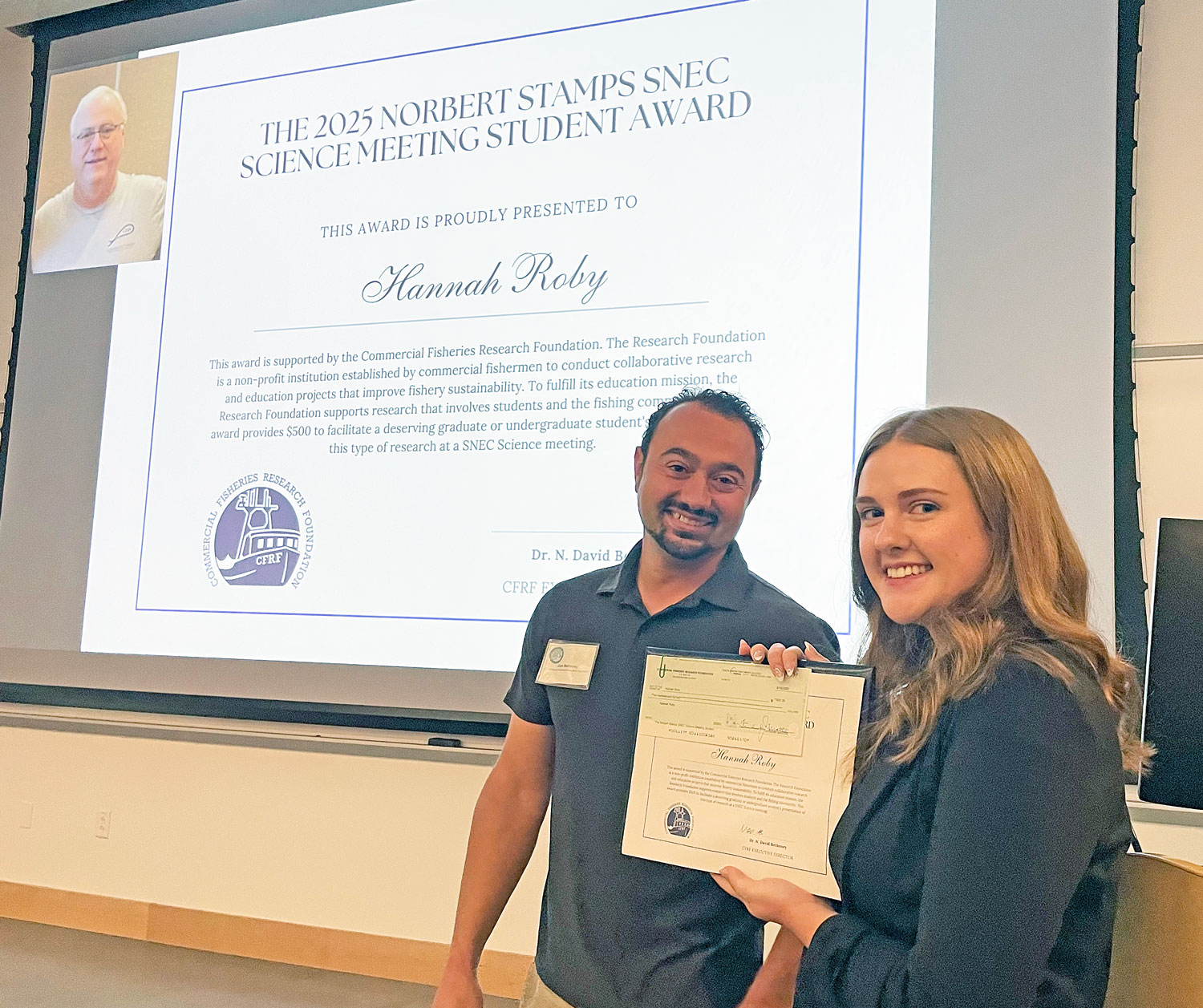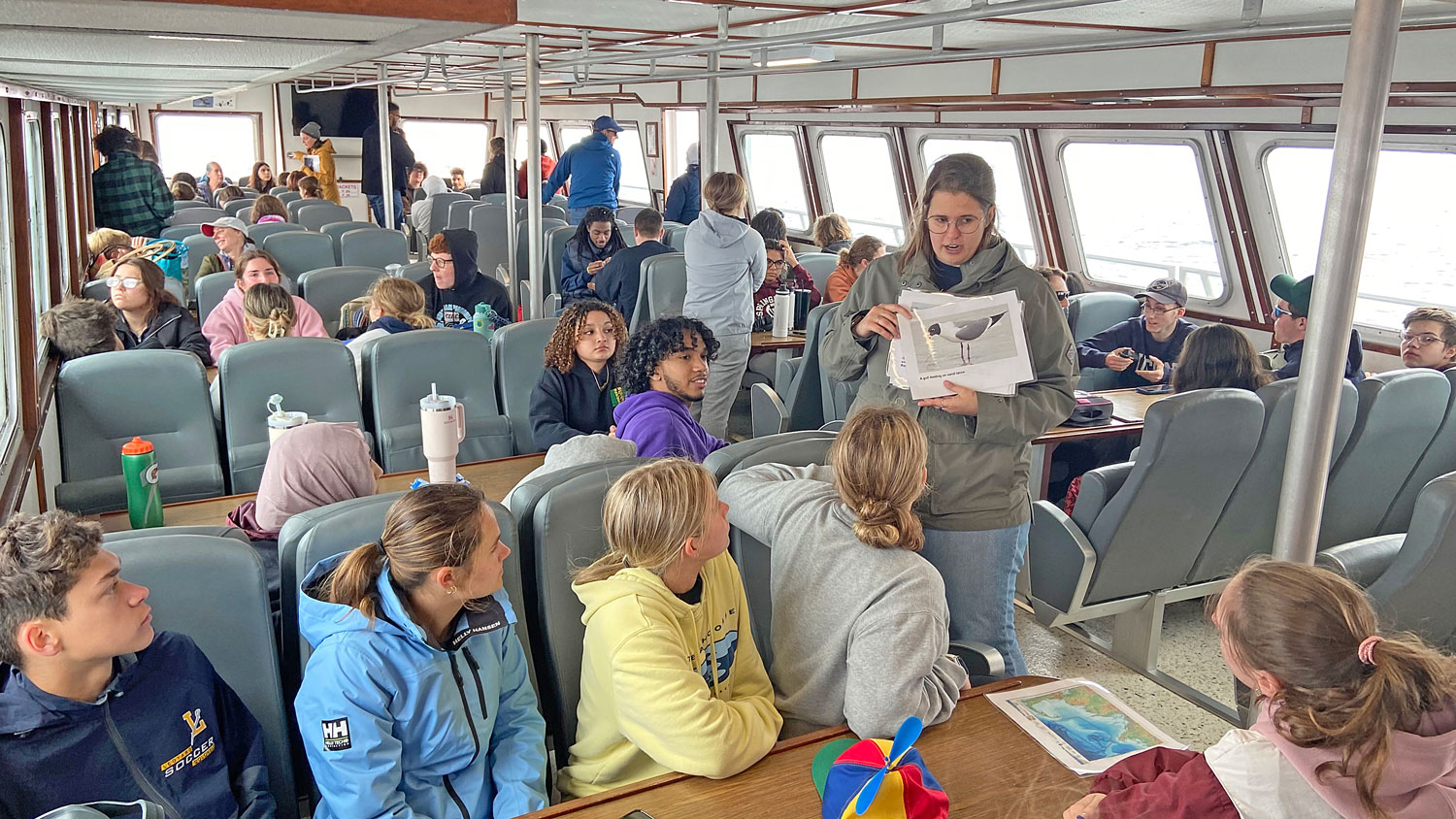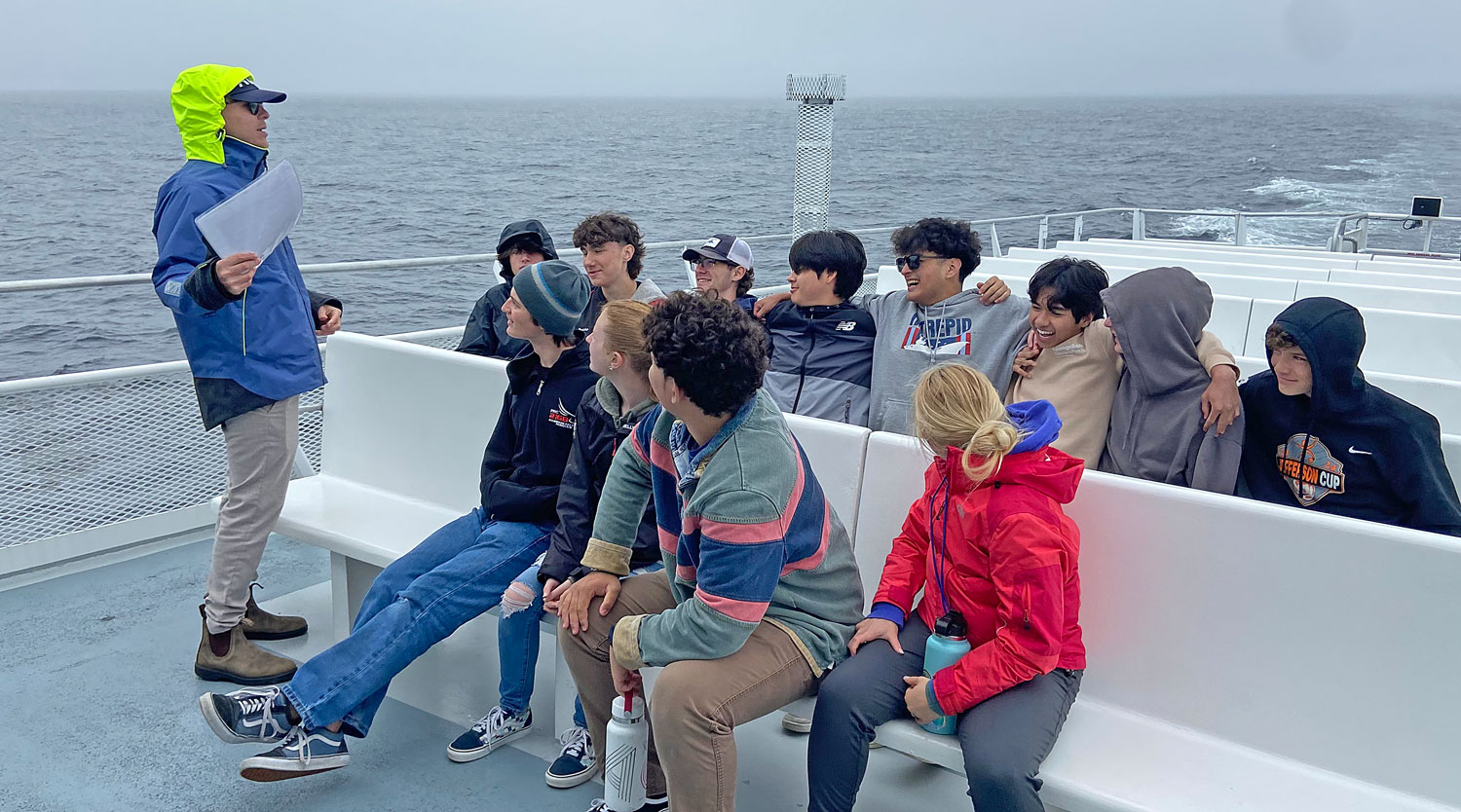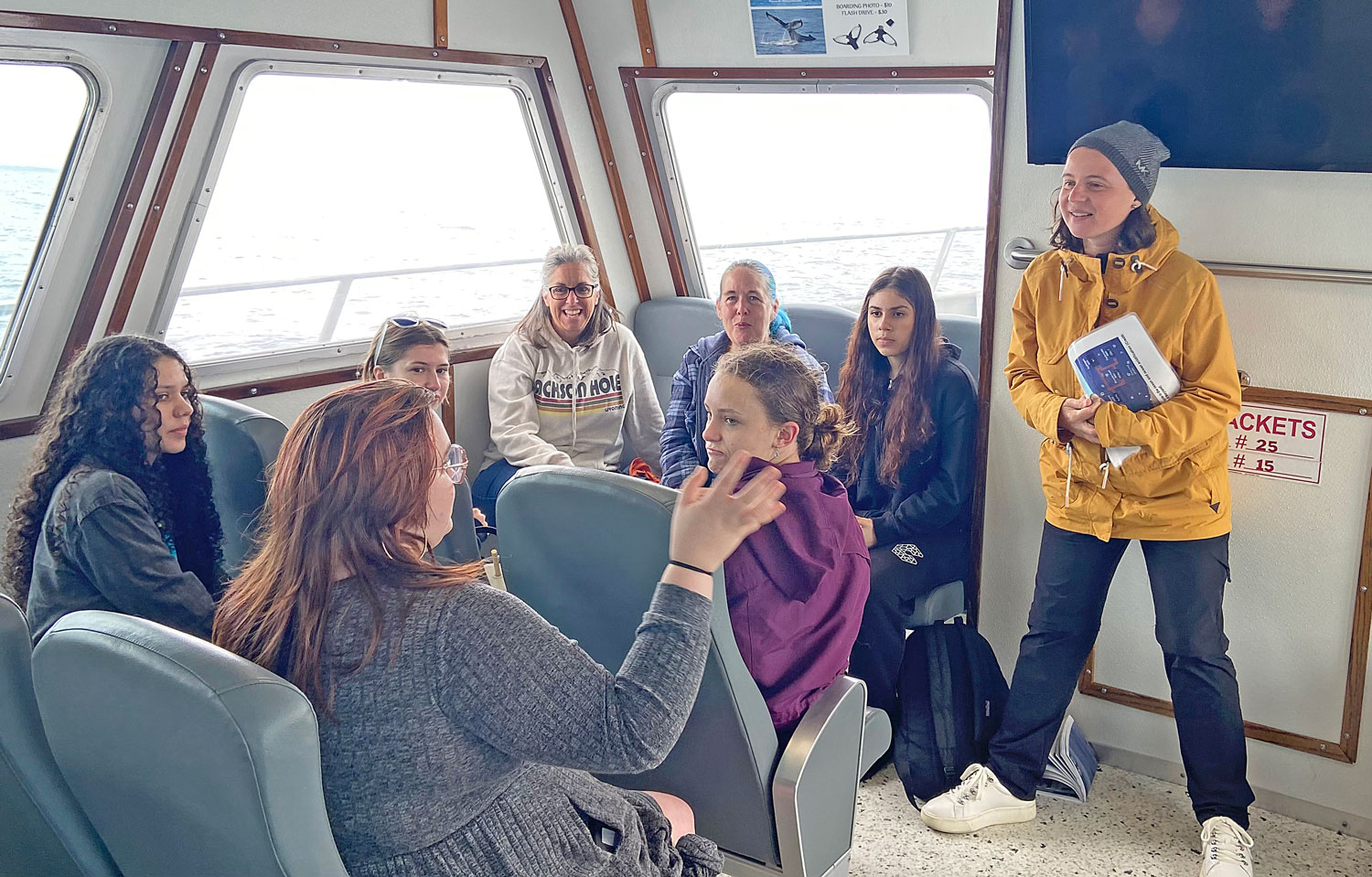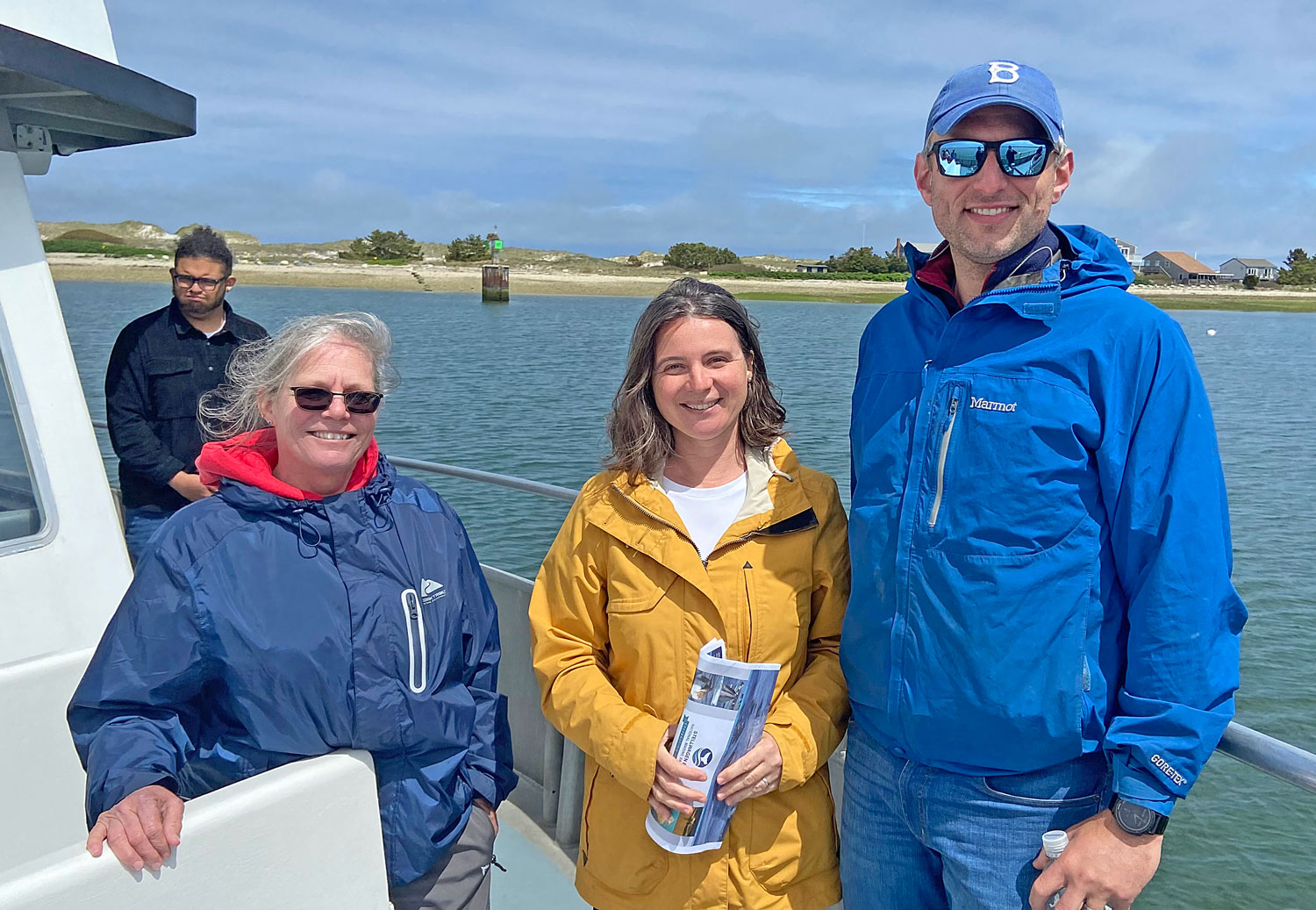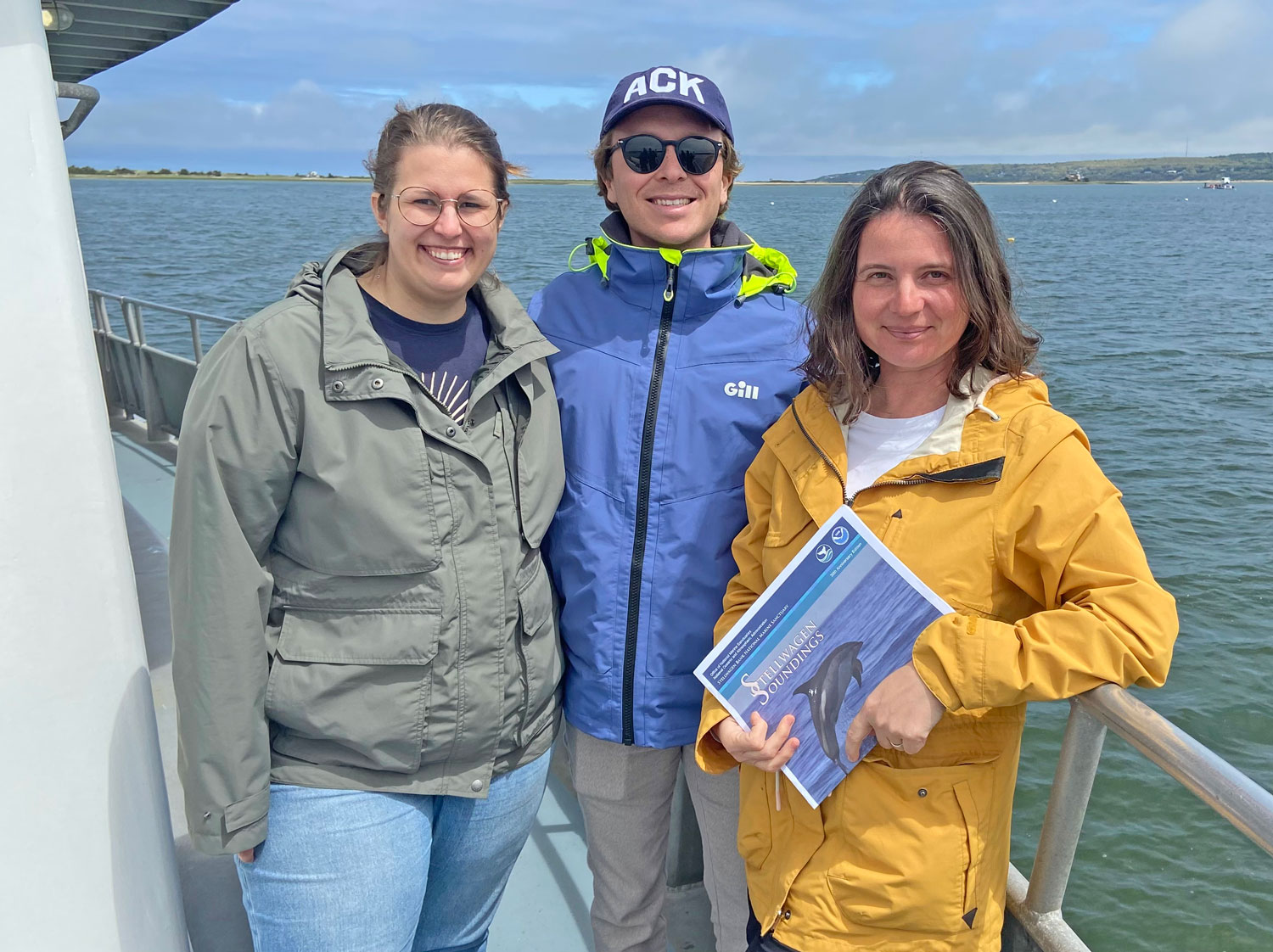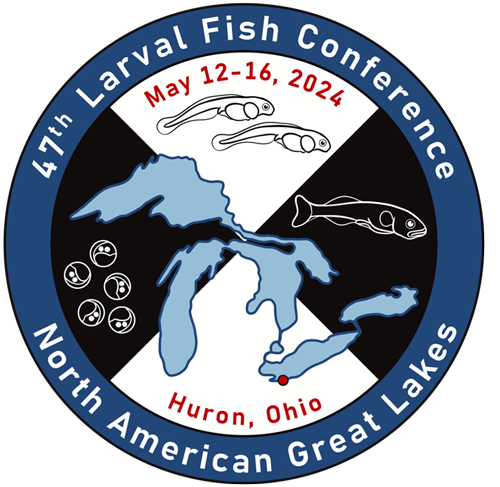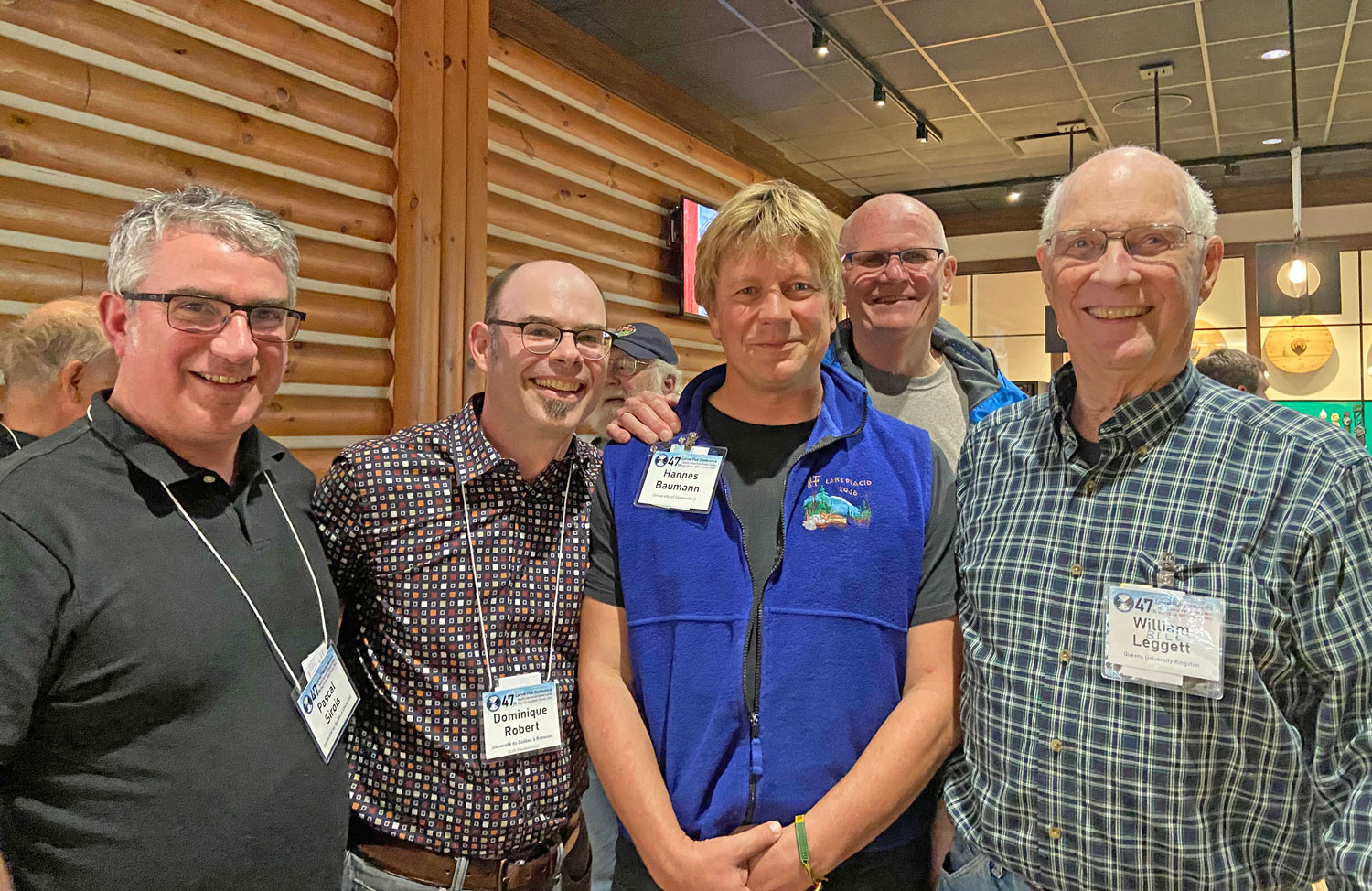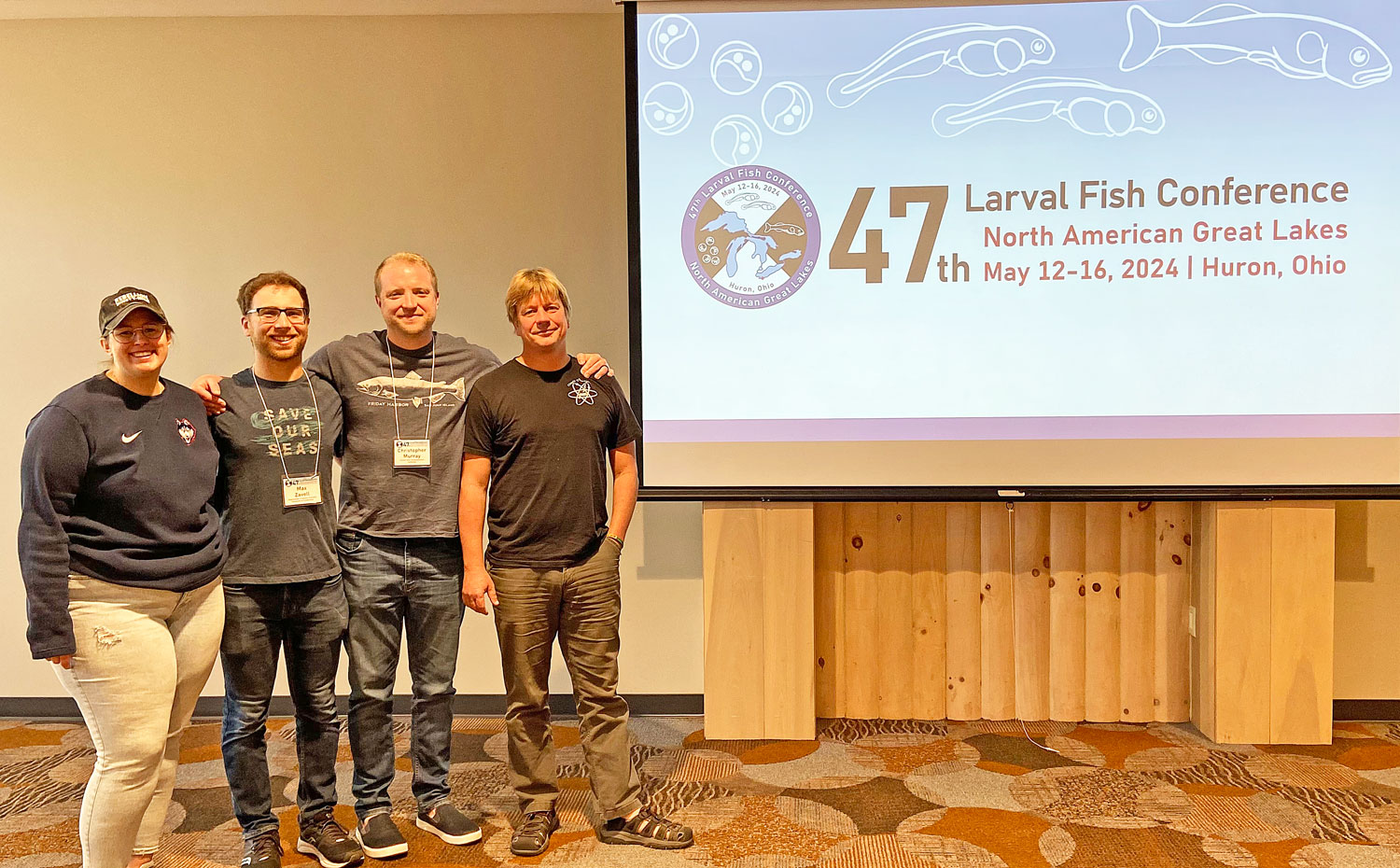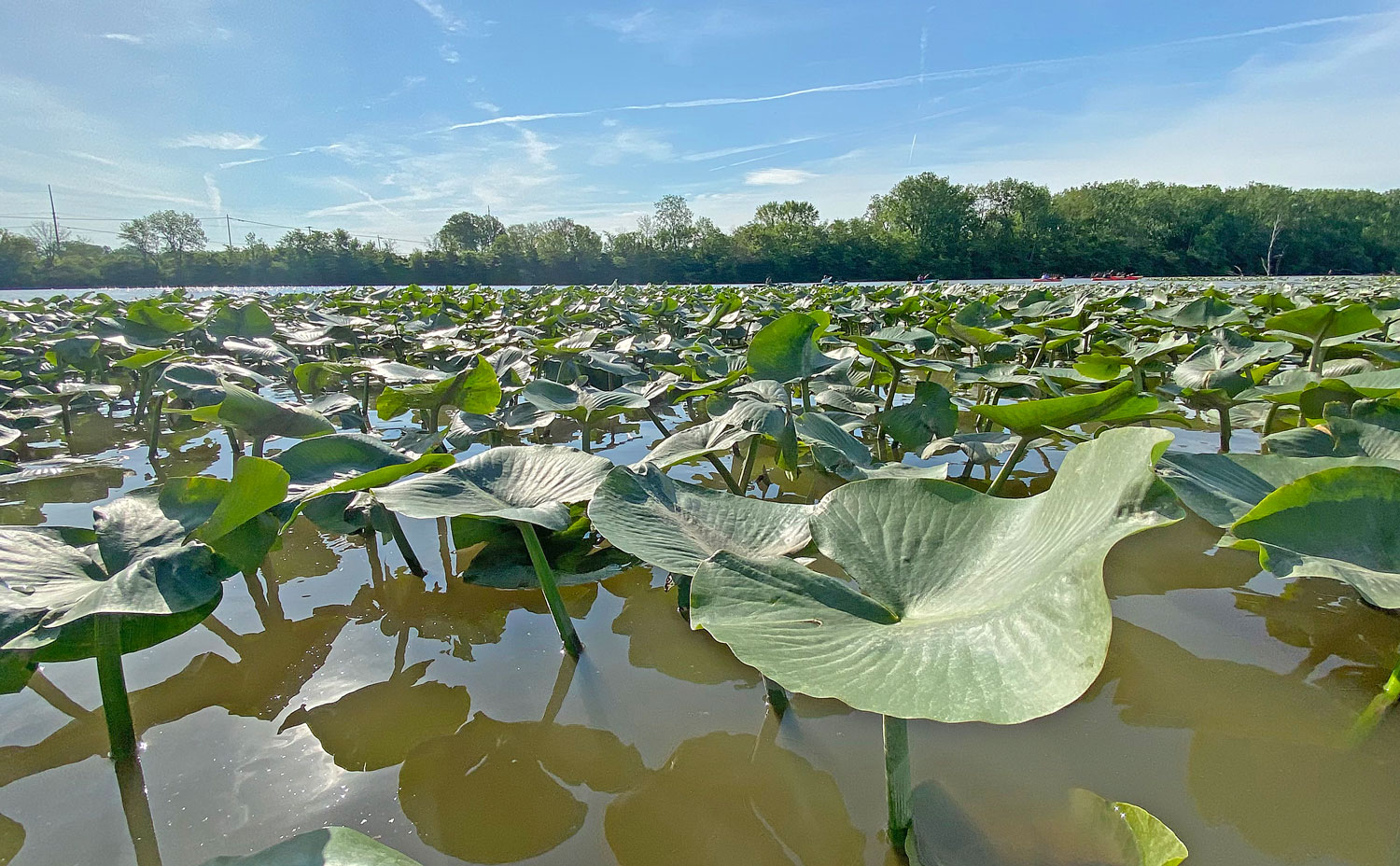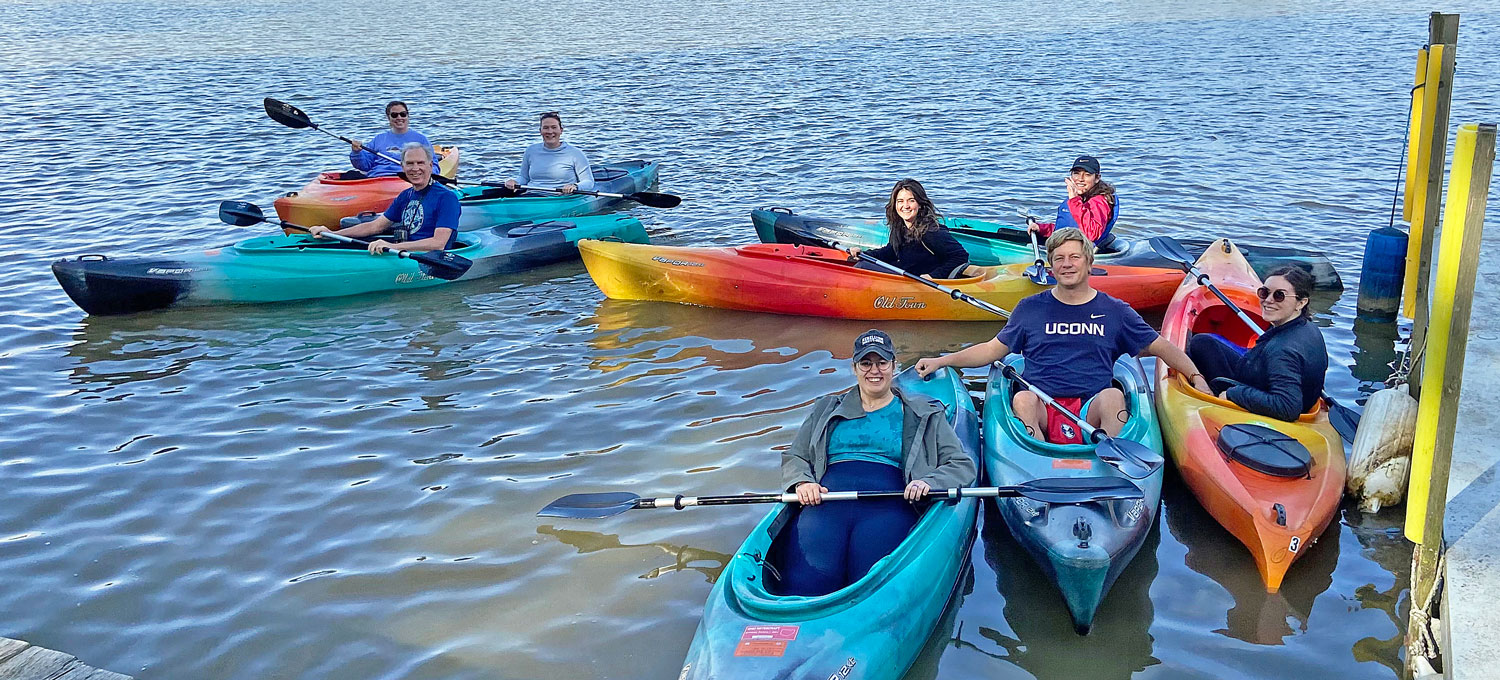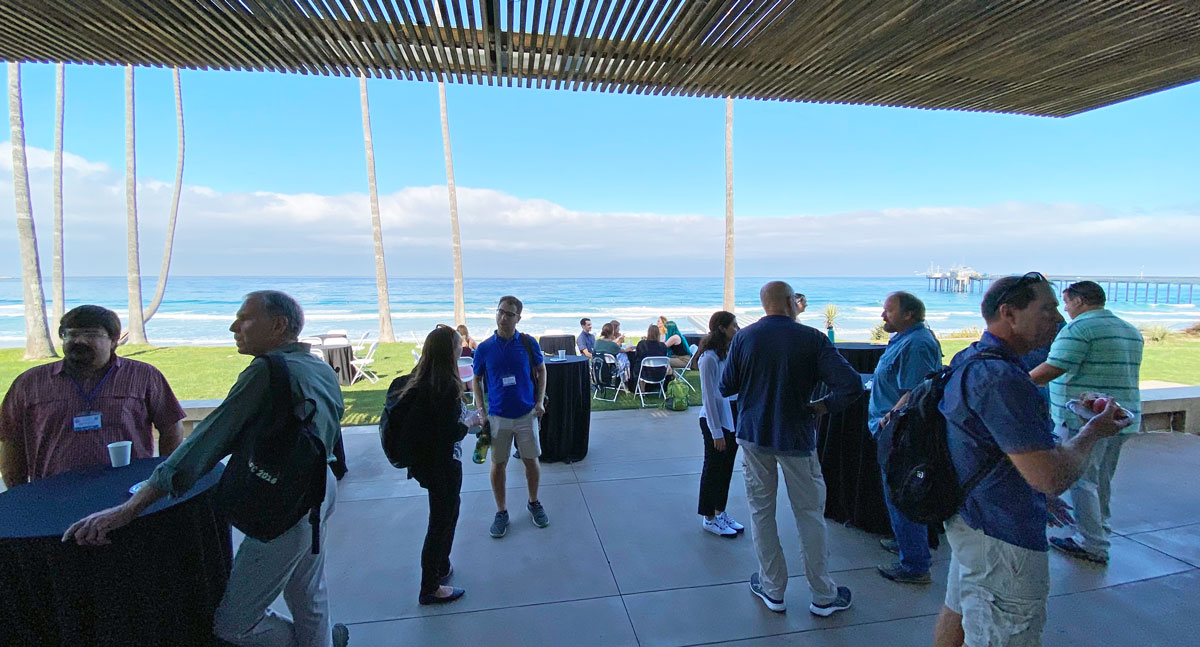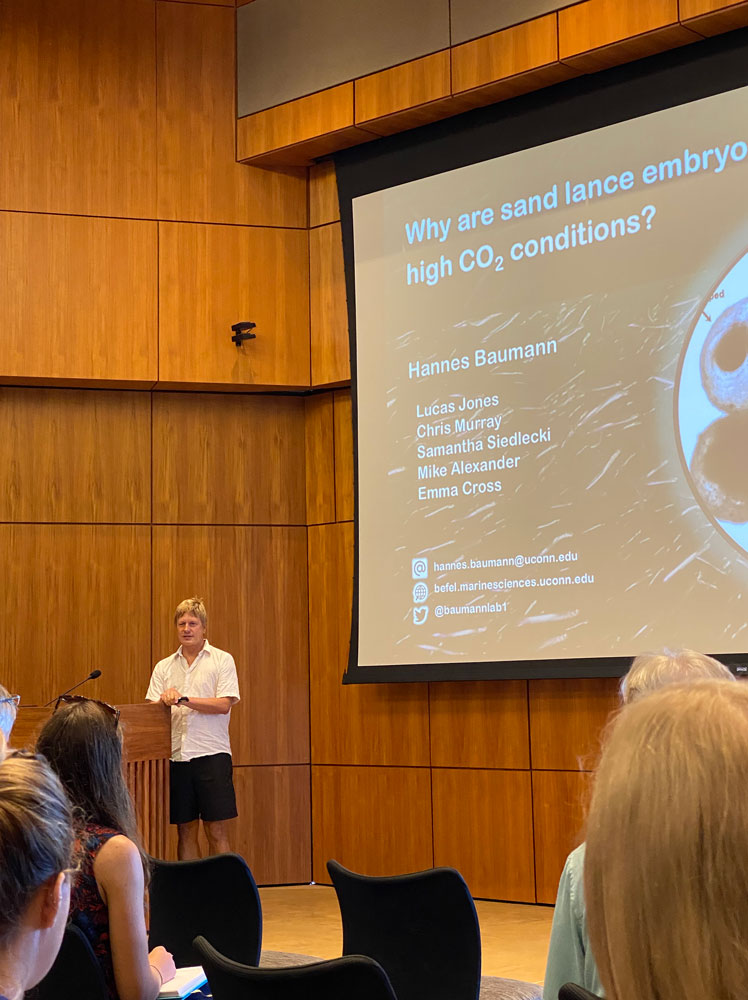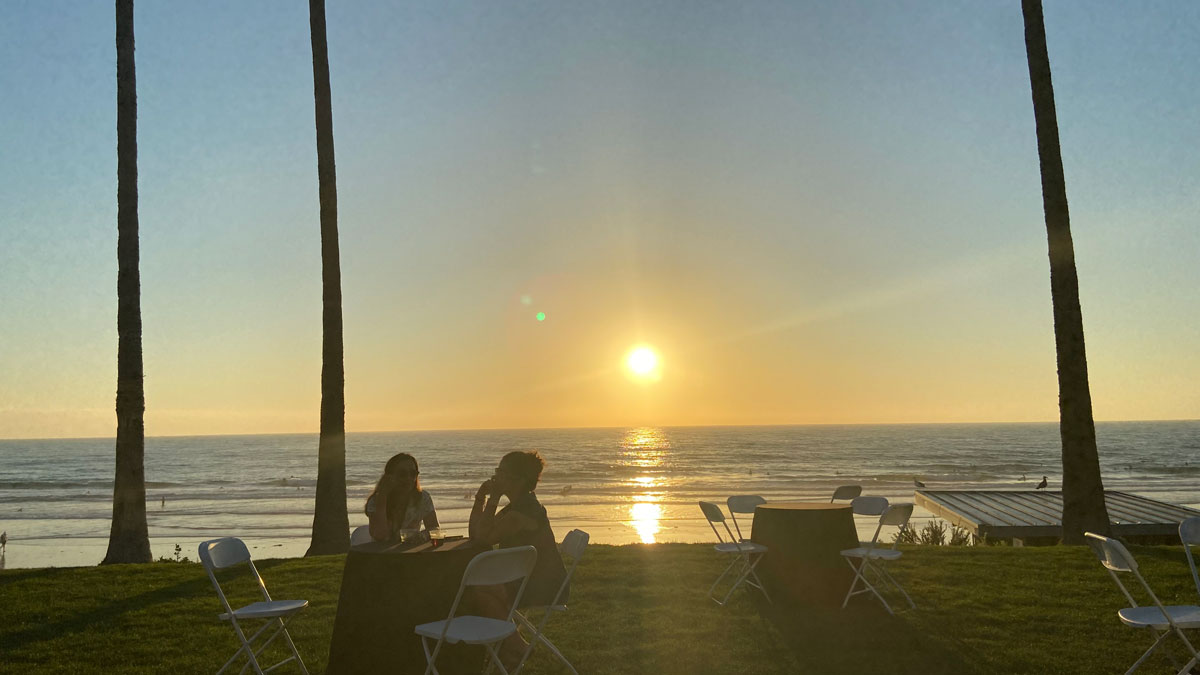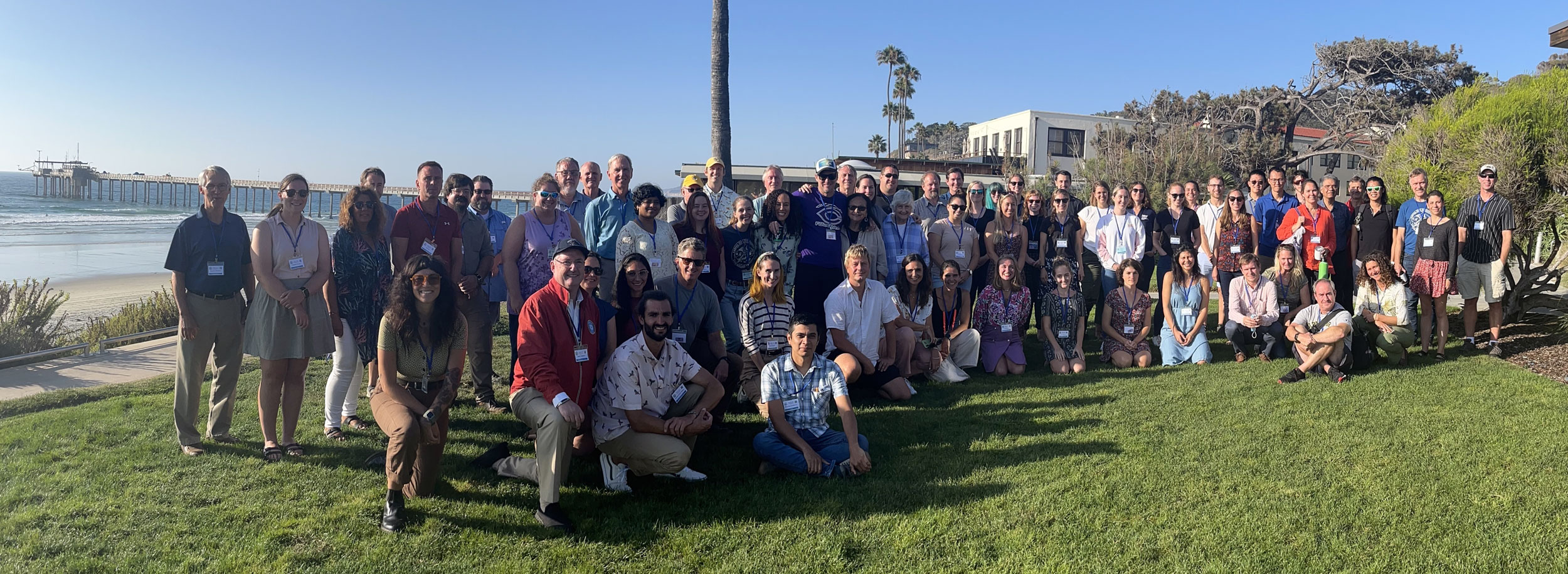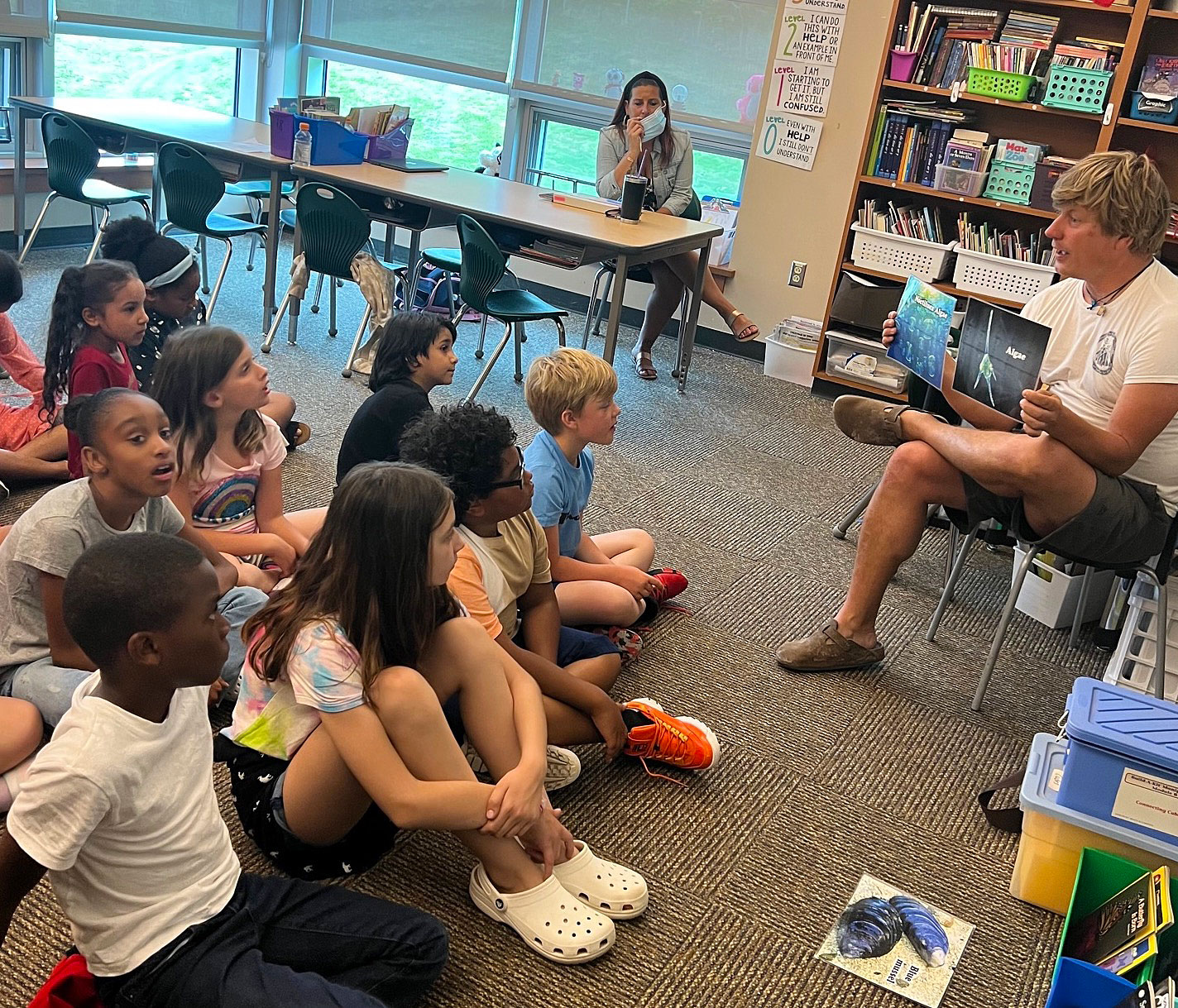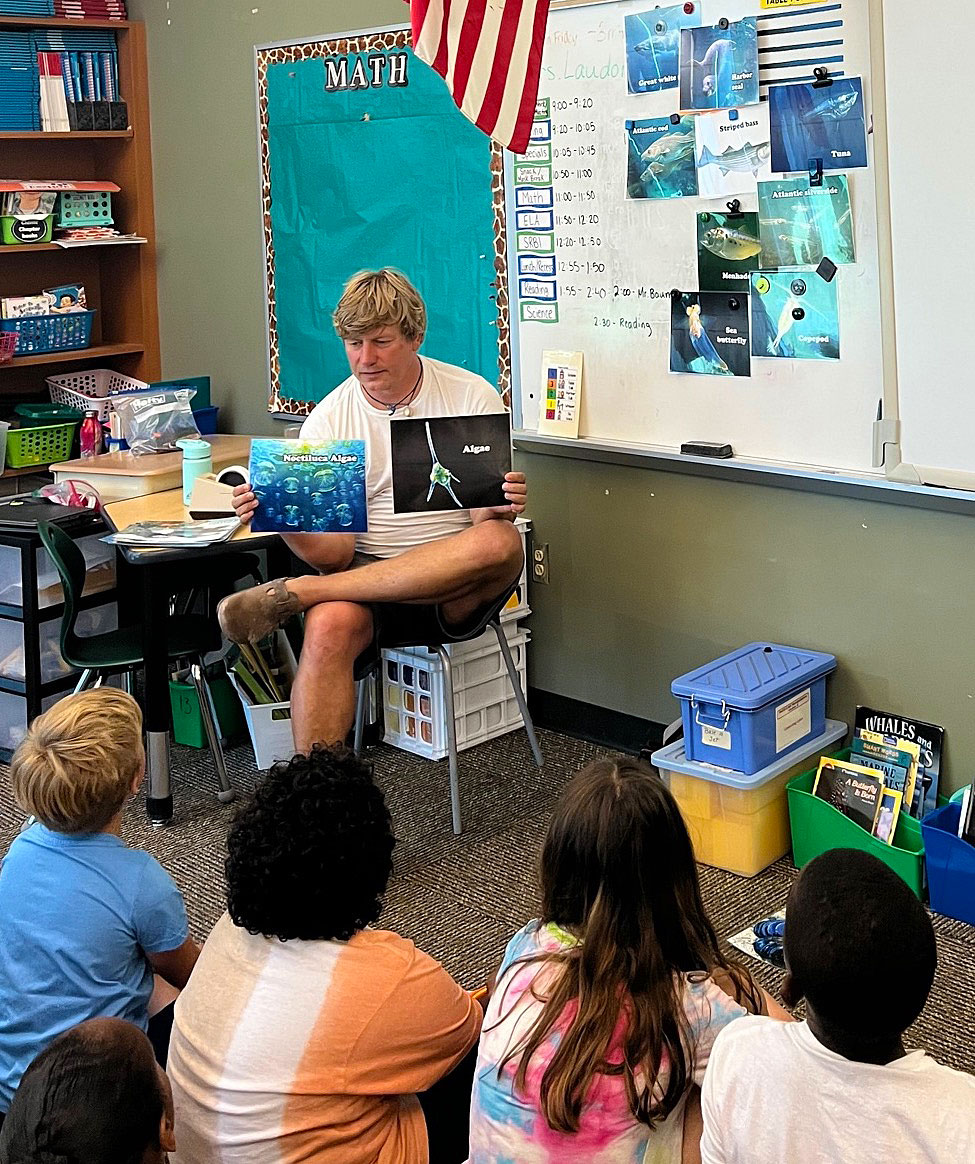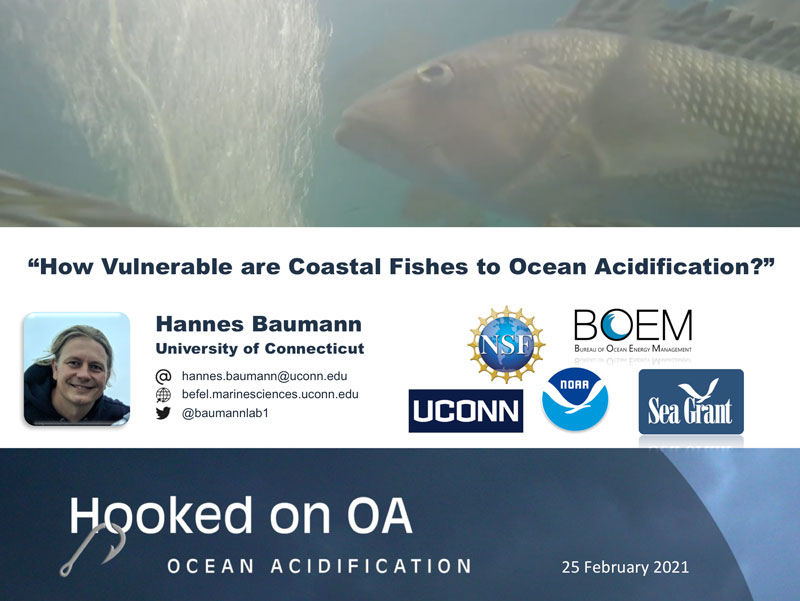The UConn Department of Marine Sciences
Presents a Master’s Thesis Presentation by
Kelli Mosca
B.S., University of New Haven, 2017
12:00 p.m., Monday, March 21, 2022
Lowell Weicker Building, Seminar Room 103 or Via WebEx
Atlantic sturgeon (Acipenser oxyrinchus) Growth and Habitat Use in the Connecticut River and Long Island Sound
Atlantic sturgeon (ATS, Acipenser oxyrinchus) are long-lived, anadromous, and endangered fish with a wide geographical distribution along the east coast of North America. Historically known to spawn in numerous rivers, many spawning runs ended due to intense fishing pressure and habitat obstruction in the 19th and 20th centuries. This was thought to be true for the longest river in the US Northeast, the Connecticut River, until pre-migratory ATS juveniles appeared in the river in 2014. Here, I use a long-term archive of fin spine samples and three years of acoustically tagged ATS to generally expand knowledge about the ATS using the CT River and LIS, and specifically examine these empirical data for potential evidence of re-emergent spawning behavior. I analyzed 301 sections of ATS fins spines collected from 1988-2021 to determine age, annuli widths, and thus population- and individual-based growth patterns. I found that the vast majority of ATS in my study area were juveniles and sub-adults with an average (± SD) age of 7.5 ± 3.1 years and an average (± SD) length of 101 ± 26 cm. The weighed, population-based Von Bertalanffy growth model estimated a K of 0.08 (95% CL, 0.01/0.17) and a L∞ of 171.2 cm (95% CI, 129/547 cm), the latter likely showing signs of missing large adults. K and L∞ distributions showed no sign of sex-specific multi-modality. Longitudinal length back-calculations revealed the selective disappearance of faster growing phenotypes (at ages 2-6) with increasing age at capture, which is clear evidence for Lee’s phenomenon. Acoustic detections of telemetered Atlantic sturgeon (2019-2021) revealed that most sturgeon in 2019 and 2020 utilized the Lower CT River (brackish water), whereas in 2021 detections were highest in LIS (salt water). Detections in the Upper CT River (freshwater) were common but much less dense across years, with 53%, 69% and 45% of ATS detected in the Upper CT River at some point in each season (2019-2021 respectively). I found a positive relationship of fish proportion in the CT River with temperature, but an inverse relationship of fish proportion in the CT River with river discharge. On average, the arrival of fish in the CT River occurred in June, when water temperatures were 17.5 - 24.9 ºC, while the departure from the CT River generally occurred in October, coinciding with river temperatures of 15.2 - 20.4 ºC. Some of the fish utilizing the Upper CT River made directed movements to a potential spawning ground at Portland, CT (river km 47). However, these movements occurred in mid- to late August (12th -23rd), which is inconsistent with the typical spring timing of ATS spawning runs in northern populations. Fall spawning runs are only known for southern ATS populations. In addition to timing, ATS sizes in the Upper CT River also do not support spawning behavior, because fish of all sizes (72 – 154 cm TL) and ages (3-15) visited the Portland area for 0.25 – 63.25 days. I conclude that neither age nor telemetry data support the re-emergence of the CT River as an ATS spawning ground. Future work will benefit from a more even sampling of gear sizes and should examine possible explanations for ATS freshwater utilization including feeding and individual preferences.
Major Advisor: Hannes Baumann
Associate Advisor: Eric Schultz
Associate Advisor: Tom Savoy
Associate Advisor: Jacque Benway
Associate Advisor: Catherine Matassa
